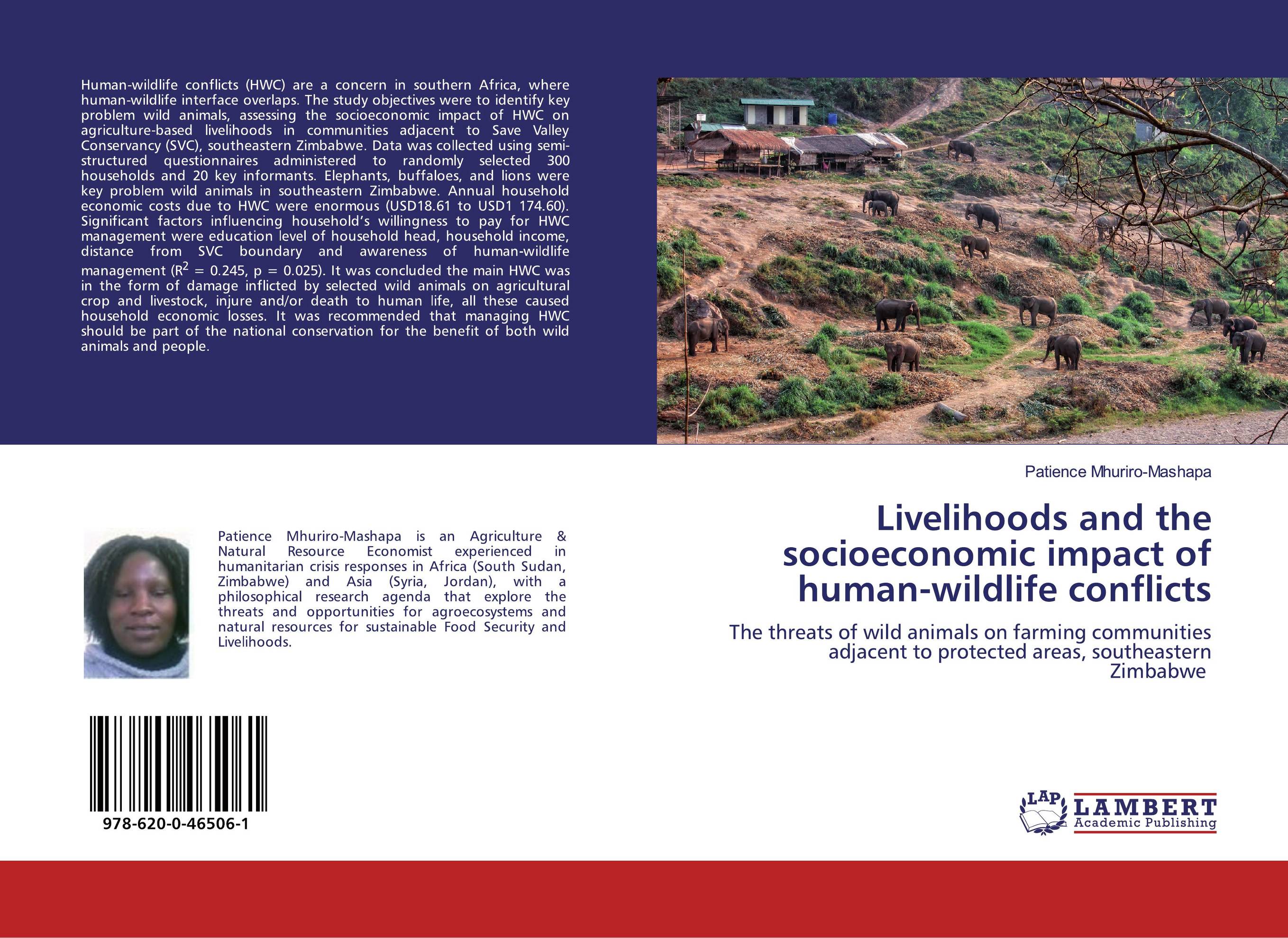| Поиск по каталогу |
|
(строгое соответствие)
|
- Профессиональная
- Научно-популярная
- Художественная
- Публицистика
- Детская
- Искусство
- Хобби, семья, дом
- Спорт
- Путеводители
- Блокноты, тетради, открытки
Livelihoods and the socioeconomic impact of human-wildlife conflicts. The threats of wild animals on farming communities adjacent to protected areas, southeastern Zimbabwe

В наличии
| Местонахождение: Алматы | Состояние экземпляра: новый |

Бумажная
версия
версия
Автор: Patience Mhuriro-Mashapa
ISBN: 9786200465061
Год издания: 2019
Формат книги: 60×90/16 (145×215 мм)
Количество страниц: 100
Издательство: LAP LAMBERT Academic Publishing
Цена: 28515 тг
Положить в корзину
Позиции в рубрикаторе
Отрасли экономики:Код товара: 506258
| Способы доставки в город Алматы * комплектация (срок до отгрузки) не более 2 рабочих дней |
| Самовывоз из города Алматы (пункты самовывоза партнёра CDEK) |
| Курьерская доставка CDEK из города Москва |
| Доставка Почтой России из города Москва |
Аннотация: Human-wildlife conflicts (HWC) are a concern in southern Africa, where human-wildlife interface overlaps. The study objectives were to identify key problem wild animals, assessing the socioeconomic impact of HWC on agriculture-based livelihoods in communities adjacent to Save Valley Conservancy (SVC), southeastern Zimbabwe. Data was collected using semi-structured questionnaires administered to randomly selected 300 households and 20 key informants. Elephants, buffaloes, and lions were key problem wild animals in southeastern Zimbabwe. Annual household economic costs due to HWC were enormous (USD18.61 to USD1 174.60). Significant factors influencing household’s willingness to pay for HWC management were education level of household head, household income, distance from SVC boundary and awareness of human-wildlife management (R2 = 0.245, p = 0.025). It was concluded the main HWC was in the form of damage inflicted by selected wild animals on agricultural crop and livestock, injure and/or death to human life, all these caused household economic losses. It was recommended that managing HWC should be part of the national conservation for the benefit of both wild animals and people.
Ключевые слова: Crops, human-wildlife conflicts, Livestock, Livelihoods, Zimbabwe



